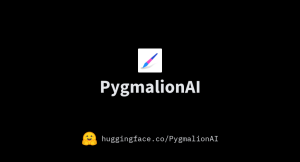Incorporating Pygmalion AI into your business or project can yield numerous benefits, but it's essential to understand the various costs involved in the implementation process. This article provides a detailed breakdown of the expenses associated with adopting Pygmalion AI, from initial setup to ongoing maintenance.
Implementation Costs
1. Licensing Fees
Pygmalion AI typically requires a licensing fee for access to its cutting-edge artificial intelligence technologies. These fees can vary based on the scope of your project, ranging from hundreds to thousands of dollars annually.
2. Hardware and Infrastructure
To run Pygmalion AI effectively, you may need to invest in high-performance hardware and infrastructure. This includes powerful servers, GPUs, and specialized processing units. The cost here can range from several thousand to millions of dollars, depending on your project's scale.
3. Integration and Customization
Integrating Pygmalion AI into your existing systems or applications may require the expertise of AI developers and data scientists. These professionals will customize the AI algorithms and ensure seamless integration. Costs for their services can vary, but you should budget for developer salaries or consulting fees.
Ongoing Costs
4. Data Acquisition and Management
To train Pygmalion AI effectively, you'll need access to large datasets. Depending on your industry and project, acquiring, cleaning, and managing data can be a substantial ongoing cost. Expenses can range from a few thousand to millions of dollars per year, especially for industries like healthcare or finance.
5. Cloud Services
If you opt for cloud-based solutions, you'll incur monthly fees for hosting and computing resources. Costs depend on usage and can fluctuate, but budgeting for cloud services is essential. Typical providers include Amazon Web Services (AWS), Microsoft Azure, and Google Cloud Platform.
6. Maintenance and Updates
AI systems like Pygmalion AI require regular maintenance, updates, and improvements to stay effective and secure. Ongoing software development and support costs should be factored into your budget. These expenses can range from tens of thousandsto hundreds of thousands of dollars annually.

Efficiency and Value
7. Efficiency Gains
Implementing Pygmalion AI can significantly improve efficiency. For instance, automating customer support can reduce labor costs by 40%, resulting in substantial savings over time.
8. Quality Improvement
Pygmalion AI can enhance the quality of your products or services, potentially increasing customer satisfaction and loyalty. This value-added benefit is challenging to quantify but can have a substantial impact on your bottom line.
Drawbacks
9. Initial Investment
The initial setup costs for Pygmalion AI can be high, making it challenging for smaller businesses to adopt.
10. Maintenance Costs
Ongoing maintenance and data-related expenses can add up over time, affecting your overall budget.
In conclusion, while implementing Pygmalion AI offers numerous advantages in terms of efficiency, quality, and value, it's crucial to plan for the associated costs. Understanding the specific expenses involved, from licensing fees to ongoing data management, will help you make informed decisions and budget effectively for the successful integration of Pygmalion AI into your business or project.
